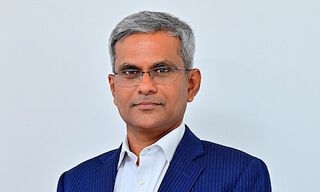Iqbal Khan has presented his plan for wealth management at UBS after three months in charge of the business. A lot of the new moves are tried and test measures from his time at Credit Suisse.
1. Regionalization – Just Like at Credit Suisse
Iqbal Khan is doing at UBS what helped him at Credit Suisse already: giving more power to the regional heads. It makes the most sense at the EMEA unit, so far led by Christine Novakovic, a unit with a heterogeneous client portfolio. Khan is dividing the unit into three separate parts, much as he did at Credit Suisse in 2018 when he gave European regional leaders a bigger say. The goal of this exercise are autonomous and hence faster decision-making procedures as well as bigger proximity to clients to boost growth. The UBS memorandum also clarifies that the Credit Suisse model corresponds to the wishes of UBS staff.
2. The Creation of a Dream-Team
Khan became a successful leader at Credit Suisse by building a group of able and loyal managers and by granting them a high degree of autonomy in exchange for their loyalty. The first signs of the same strategy are now emerging at his new employer: Joe Stadler has taken a key role in the growth strategy, being appointed as leader of the Global Family Office unit, in charge of catering to the needs of the 1,500 most lucrative customers worldwide.
The regionalization and delayering give more power to relationship managers and to the heads of the regions: Caroline Kuhnert (head of central and eastern Europe) as well as Ali Janoudi (head of the Middle East and Africa), both of which were promoted to the executive committee in global wealth management. The question remains who Khan is going to pick from his former Credit Suisse dream-team? We will get to know once the bonus payments have been made in the first quarter of 2020.
3. Stop-Watch Advisory
The relationship managers will get more time to spend with their clients again, a major target at UBS. The bank says that this was a demand from staff across the company. UBS will take stock of how much time their relationship managers really spend with their clients.
It is, of course, unlikely that bosses will take a stopwatch to check on their staff. But for the bank, it is a lucrative idea to get their people to work more closely with clients – given that they will thus become exposed to business ideas and also help it justify the fees it charges.
4. Fewer Bosses
Khan aims to abbreviate decision making and to reduce the hierarchies. He is cutting three layers of bureaucracy and moves from five to four segments. The change will lead to cuts of about 500 jobs, according to information obtained by finews.com.
The move resembles the steps taken by Thomas Gottstein, head of Switzerland at arch-rival Credit Suisse.
5. More Robots, Fewer Relationship Managers
It is an old complaint: relationship managers fretting about administrative task taking their time. Khan is resorting to the same measure as he did at his former company: employing more technology.
While he aimed to increase the number of relationship managers at Credit Suisse, this isn’t the plan at UBS. The bank plans to put more robots to work instead.
6. Moving Together
The division of labor between investment bank and wealth management was a question of contention in the past. Today’s announcement shows that the investment bank is taking over from Christian Wiesendanger’s group at wealth management, which so far developed IPS products and executed trading orders. The sales reps are distributed among the regional groups.
7. Bigger Lending Risks
Sergio Ermotti has always been against adding to the bank’s risks by increasing the loans to his clients in the wealth management business. Over the past year, the bank moved away from this dogma and Khan now wants to go much further down this road. He aims to give 20 to 30 billion francs in loans to the super-rich clients every year.
The new team named Unified Global Markets will cater to the needs of clients who signal a demand for financing. They will take shares, stakes, hedge funds and private equity as security for loans and financing of all sorts. The message is clearly one of higher risk-taking as the bank aims to satisfy the needs of its clients.

























